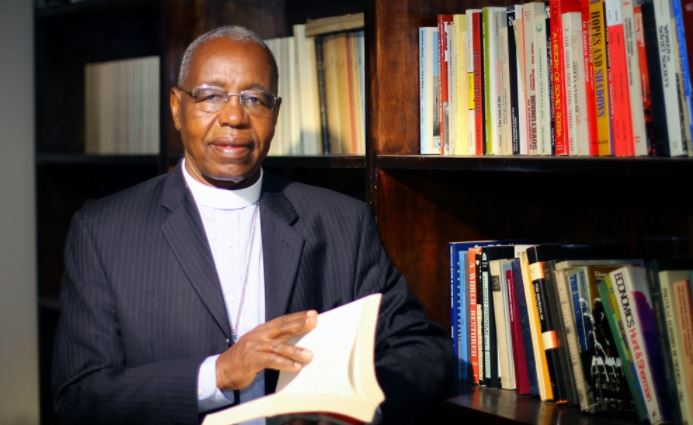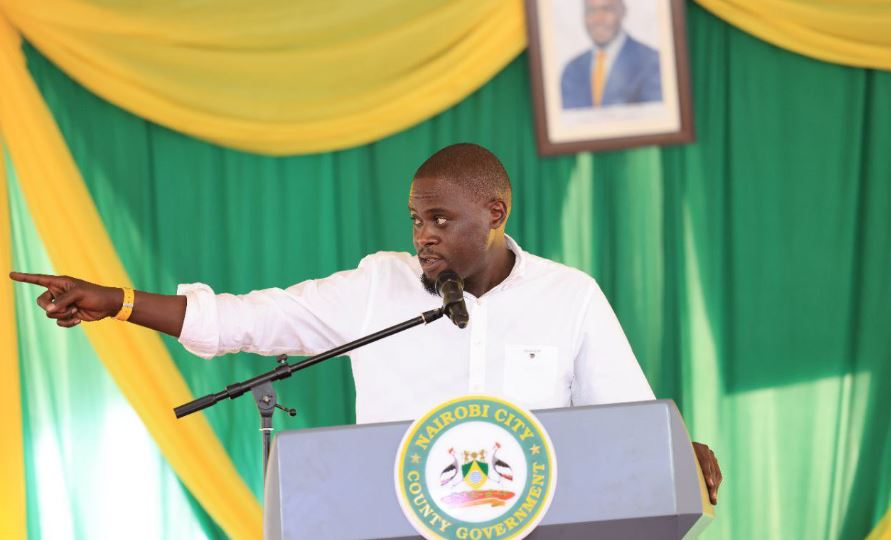
Titled: Selfhood; Divinity of the Clitoris, the book focuses on women’s right to control their own bodies by calling an end to oppressive practices such as Female Genital Mutilation (FGM).
By highlighting his own mother’s experience in the journey to realizing ‘selfhood’ (a state where a woman repositions herself outside the context of traditionally set gender and cultural norms); the book showcases the story of Wandia, the first Kikuyu woman to openly escape FGM to pursue education.
Njoya spoke to Life&Style about the book and more.
Congratulations on the launch of your new book. It is a massive 802-page text. Why ‘Selfhood’?
Njoya: The book is an attempt to streamline the African identity. Selfhood, in the context of the book, means that human beings are created in the image of God and are complete in themselves. It is a strong affirmation that all human beings are created sovereign, equal and unique with equal rights.
What is the motivation behind it?
First, the motivation derives from theological teachings. It is good I start by saying that God created both man and woman in his own image. He created them to be helpers of each other, and not necessarily to live independent of each other.
For long enough now, many biblical interpreters have distorted the meaning of the creation analogy to imply that God created different people. That is not the case. He created and differentiated them to complement each other. Hence, it was a gender differentiation but not a separation.
Secondly, the book sought to offer an understanding of how religion and science marry in realising the meaning of human life. It is, therefore, accurate to say that differentiation that God did was functional.
It enables both men and women to play different roles that complement each other, and that is a fundamental lesson that I was trying to bring forth.
What is your idea of gender equality?
As I have said, human beings are made as one. It is only after differentiation that the gender become distinct. That, however, does not make a man greater being than the woman or vice-versa. Instead, it makes them equal to each other.
So, for example, the fact that we have different biological functions does not really make either inferior or superior to the other. Women are created with a womb to carry the baby. The fact that men do not carry pregnancy does not make them inferior. Therefore, from biological, theological and cultural perspectives, man and woman cannot be greater or lesser than the other. Both are equal and that is gender equality to me.
The subject of your book derives a lot from female sexuality. Where do you ideologically merge the practice of male circumcision and FGM in demystifying the perceived equality?
From the biblical days of Abraham, people used to sacrifice children. The practice ceased only when they went to Babylon. There is a time God asked Abraham not to sacrifice his child. Instead, he cut off the foreskin of Isaac.
This means that only a part of his was cut off. Think about female circumcision: the whole clitoris had to be cut off. You see, that’s a practice of inequality in the treatment of women, although it is intended for a sacrificial course. Besides the fact that FGM is hurtful and harmful, it is an unequal practice in itself.
FGM is a horrendous act. Sometimes it is justified by its proponents. Tell us more about your research on its impact
Scientific evidence has shown that FGM has adverse effects on a woman. Neuroscience explains that the clitoris is wired with 20,000 nerve endings. They facilitate sexual activity, and are useful during birth as they help in pulling the pelvic bones apart.
Cutting off the clitoris means that the nerves are removed from her body, reducing the woman’s ability to give birth.
Data shows that 20 per cent of circumcised women die while giving birth. In other cases, still births are recorded in case the mother is not lucky to get caesarean section done. It also results to fistula due to the constriction of the muscles. Hence, FGM is a life-threatening exercise, against all logic.
A lot of focus has been given to Africa in regards to FGM. Is FGM an African traditional problem?
No. FGM did not originate in Africa. It was introduced during the Arab invasion of Africa and it spread to different societies. There is no evidence of clitorectomy in some communities such as Turkana as recently as the time of European invasion.
It is almost surreal that FGM continues in the 21st century, and there is no doubt that the efforts to end the practice have been in place for eons now. Why do you think it is still a challenge today?
It is true that FGM practice continues today and that makes it an important subject to address. As recorded in my book, FGM was first banned in the Gikuyu community by the Agikuyu people in 1915. There was conflict in outlawing the practice.
There were men who didn’t want women circumcision to continue because they loved children and they had seen the increase of mortality rate associated with the practice.
The Agikuyu fought FGM led by P.C.E.A. The church required all its members to put a thumb stamp as a sign that they would not participate in FGM. Those who declined to sign were expelled from the church.
That brought the connotation that P.C.E.A is a “Church of the thumbprint.” So, you can see that the church played an integral role in marshalling the people to ban FGM in the early days.
And why is it still a challenge today?
I would say that people practice it for what they believe. For example, among the Kikuyu, the proponents of FGM believed that circumcised women would not prostitute themselves.
They knew that FGM was a way of taking away the ability of women to experience full sexual pleasure, although they had witnessed its adverse outcomes.
I also think the idea of male domination has had a great share in sustaining the culture of FGM. One thing is that it contributes to polygamy in the society. A circumcised woman will want his man to marry another woman so that she can be relieved of the pain during intercourse.
Hence, women have always sought alternatives that would take away their tribulations and there has been little goodwill from men. So, whichever way you look at it, FGM is an oppressive act upon women that has been sustained by beliefs and a collective lack of goodwill to fight against it all in one accord.
You mentioned that the fight against FGM was not been without conflict. Who did the reformers rattle and battle to have their way?
The church faced fierce opposition from different quarters, including the government of the day. The government, led by Governor Edward Northey, who was in charge of Kenya after World War I, opposed the ban on FGM enforced by the P.C.E.A. They did not want the vital custom of the Agikuyu people to fade, the main reason being that they wanted to retain the control over the people.
There were other churches, including the Methodist church, Seventh Day Adventist and Anglican Church who were part of the missionary alliance that agreed to the ban, but only the P.C.E.A enforced it.
How was the research process for the book like?
The book would not have been over 800 pages if it didn’t take into account the illustration of all the resources that were available. I have travelled across Africa, visiting communities that practised FGM. I have been to Ghana and Nigeria, and I have also visited Matabele and Zulu communities.
Are there plans to have the book translated to African languages?
I am convinced that translations to local languages should be made available. This will increase the reach and the awareness, especially among men who champion for the FGM practice. Most of them will get an understanding of the inequality and tribulations associated with cutting off the female genitals.







